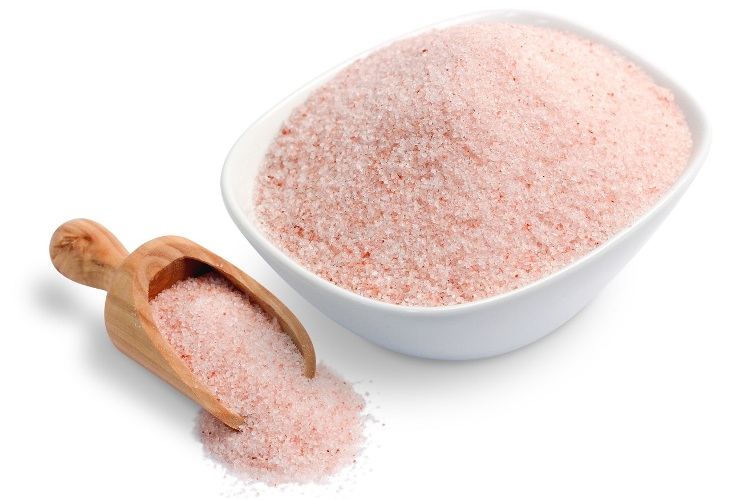
Himalayan Salt. COURTESY
Himalayan salt is rock salt (halite) mined from the Punjab region of Pakistan. The salt, which often has a pinkish tint due to trace minerals, is primarily used as a food additive to replace refined table salt but is also used for cooking and food presentation, decorative lamps and spa treatments. The product is often promoted with groundless claims that it has health benefits.
Himalayan salt is mined from the Salt Range mountains, the southern edge of a fold-and-thrust belt that underlies the Pothohar Plateau south of the Himalayas in Pakistan. Himalayan salt comes from a thick layer of Ediacaran to early Cambrian evaporites of the Salt Range Formation. This geological formation consists of crystalline halite intercalated with potash salts, overlain by gypsiferous marl and interlayered with beds of gypsum and dolomite with infrequent seams of oil shale that accumulated between 600 and 540 million years ago. These strata and the overlying Cambrian to Eocene sedimentary rocks were thrust southward over younger sedimentary rocks, and eroded to create the Salt Range. Local legend traces the discovery of the Himalayan salt deposits to the army of Alexander the Great. However, the first records of mining are from the Janjua people in the 1200s. The salt is mostly mined at the Khewra Salt Mine in Khewra, Jhelum District, Punjab, Pakistan, which is situated in the foothills of the Salt Range hill system in the Punjab province of the Pakistan Indo-Gangetic Plain. It is primarily exported in bulk, and processed in other countries for the consumer market. Himalayan salt is used to flavor food.
Due mainly to marketing costs, pink Himalayan salt is up to 20 times more expensive than table salt or sea salt. The impurities giving it its distinctive pink hue, as well as its unprocessed state and lack of anti-caking agents, have given rise to the belief that it is healthier than common table salt. There is no scientific basis for such claimed health benefits. In the United States, the Food and Drug Administration warned a manufacturer of dietary supplements, including one consisting of Himalayan salt, to discontinue marketing the products using unproven claims of health benefits. Slabs of salt are used as serving dishes, baking stones, and griddles, and it is also used to make tequila shot glasses. In such uses, small amounts of salt transfer to the food or drink and alter its flavor profile. It is also used to make "salt lamps" that radiate a pinkish or orangish hue, manufactured by placing a light source within the hollowed-out interior of a block of Himalayan salt. Claims that their use results in the release of ions that benefit health are without foundation. Similar scientifically-unsupported claims underlie use of Himalayan salt to line the walls of spas, along with its use for salt-inhalation spa treatments.






0 Comments